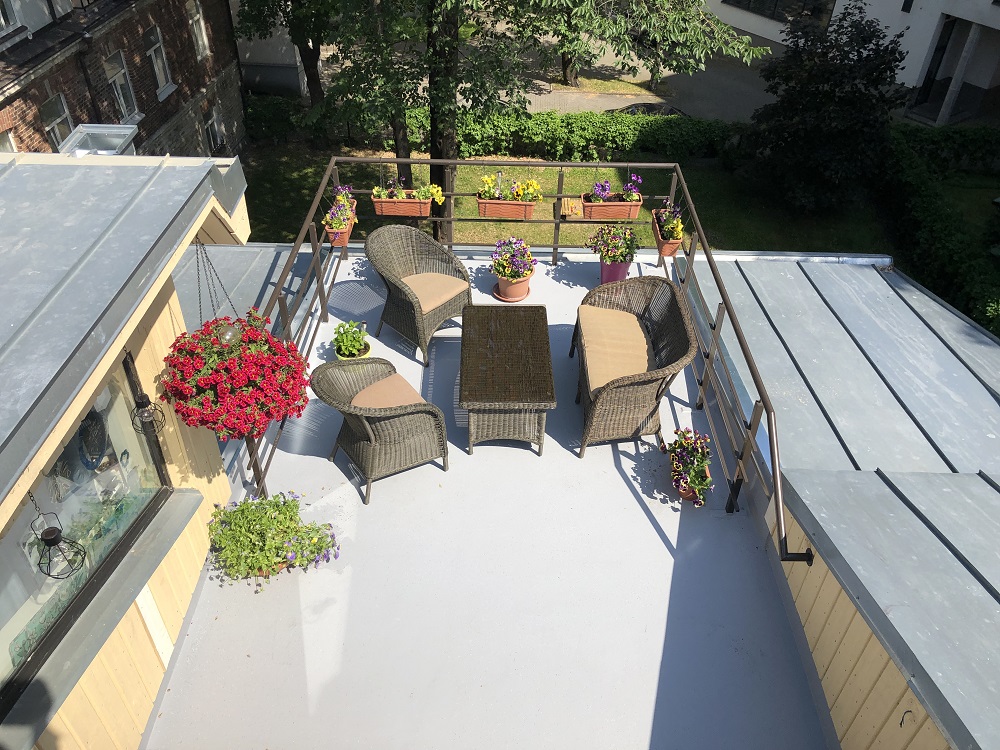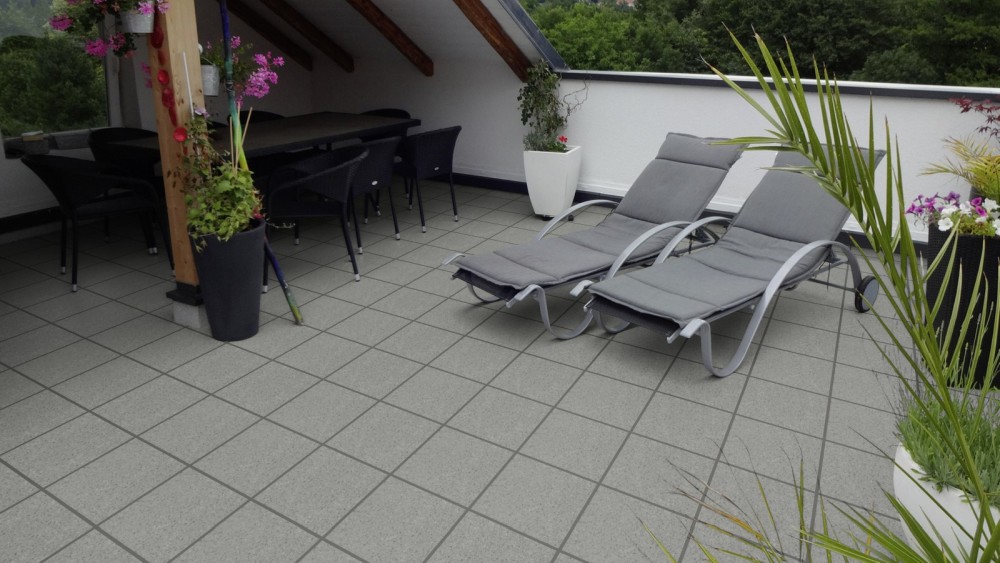About liquid plastic
Traditionally, SBS Bituminous felt and PVC materials are used for roof, terrace and balcony waterproofing. PVC is used as a finishing and bitumen as hydro insulation for inverted roof.
In inverted roof the waterproofing is on top of the roof’s carrying structure, on top of which a drainage and insulation are applied, then poured over with concrete or added tiles.  Since 2012 we have started using liquid plastics on terraces and roofs for waterproofing and as a decorative layer. The main reason being that they have proved themselves to be reliable and durable materials.
Since 2012 we have started using liquid plastics on terraces and roofs for waterproofing and as a decorative layer. The main reason being that they have proved themselves to be reliable and durable materials.
What is liquid plastic?
Liquid plastic materials are called reactionary substances that harden as a result of being mixed with another substance.
Single component liquid plastic materials, e.g polyurethanes, react with air humidity.
Two-component liquid plastic, e.g PMMA, polyurea, epoxy, reacts with an activator that is added.
Surfaces that liquid plastic sticks to /bonds with are many. Concrete, asphalt, different metals, screed, wood, waterproof plywood, different kinds of plastic and glass are a good base. Liquid plastic forms an even permanently waterproof layer without joints.
These kind of materials are excellent to waterproofing buildings with that are different shapes and used for different purposes. In construction, it is mainly used for waterproofing foundations, floors, terraces and roofs and as a decorative layer.
The top layer can be toned, designed with different shapes as well as used natural stone on.

What are the advantages of liquid plastic?
Liquid plastic solutions have a lot of advantages compared to regular/traditional waterproofing solutions in new buildings as well as on old buildings.
The biggest advantage of is noticeable on joints, which are the weakest points of any roof, terrace or balcony. As the material is applicable in a liquid form, it is possible to waterproof different kinds of surfaces such as arched and round surfaces.
In addition, on application there is not used any fire as it is with bitumen felt materials. This is beneficial when working around flammable materials.
To our solutions we can give a guarantee with different lengths, 10, 15 or 25 years. The length of our guarantee depends on whether strengthening fleece was used, the thickness of hydro isolation, the strength of the surface, the number of extra layers and the finish layer. To our work we, generally, give a 5-year guarantee. Guarantee is not given on repair works because we cannot guarantee with a 100% certainty that we have eliminated the issue and after us there are not going to be any issues.
Liquid plastic materials can be used for renovation/ repair as well as on new buildings as it adheres, with or without primer, to different surfaces, e.g concrete, stone, wood, plastic, glass, bitumen, metal. If there is a doubt, then a test needs to be carried out before any works start to verify the adherence of the materials.
All layers leave an even and seamless finish with a 100% adherence. If for some reason there is damage to the top layer then water is not able to go under the waterproofing as the nearby areas still adhere to the base surface. As a result, it is much easier to spot leaks before much more damage is done.
How and in what order liquid plastic works are done?
The steps of working with liquid plastic are the following:
- The surface is cleaned from loose parts and sand down. It is important to remove all dirt that could reduce adherence, e.g oil and paint.
- The whole surface is primed if needed
- Joints are waterproofed with strengthening fabric. E.g wall and floor joint, pipe joints, railing joints, gullies
- The surface is covered in main waterproofing (with strengthening fabric if needed)
- A 2-3 mm wearing layer is poured on top of waterproofing which protects it and evens out fabric’s overlaps and other unevenness. In addition, the layer distributes forces applied to the surface.
- A finishing / decorative layer is applied on top of wearing layer. The layer can be toned, added flakes, sand or decorative stone to. This layer is more durable and serves as extra protection to the bottom layers.
Introductive video of Triflex
Contact us or come to visit
If you need advice or help from men who just don't talk but actually do, write or call us.







